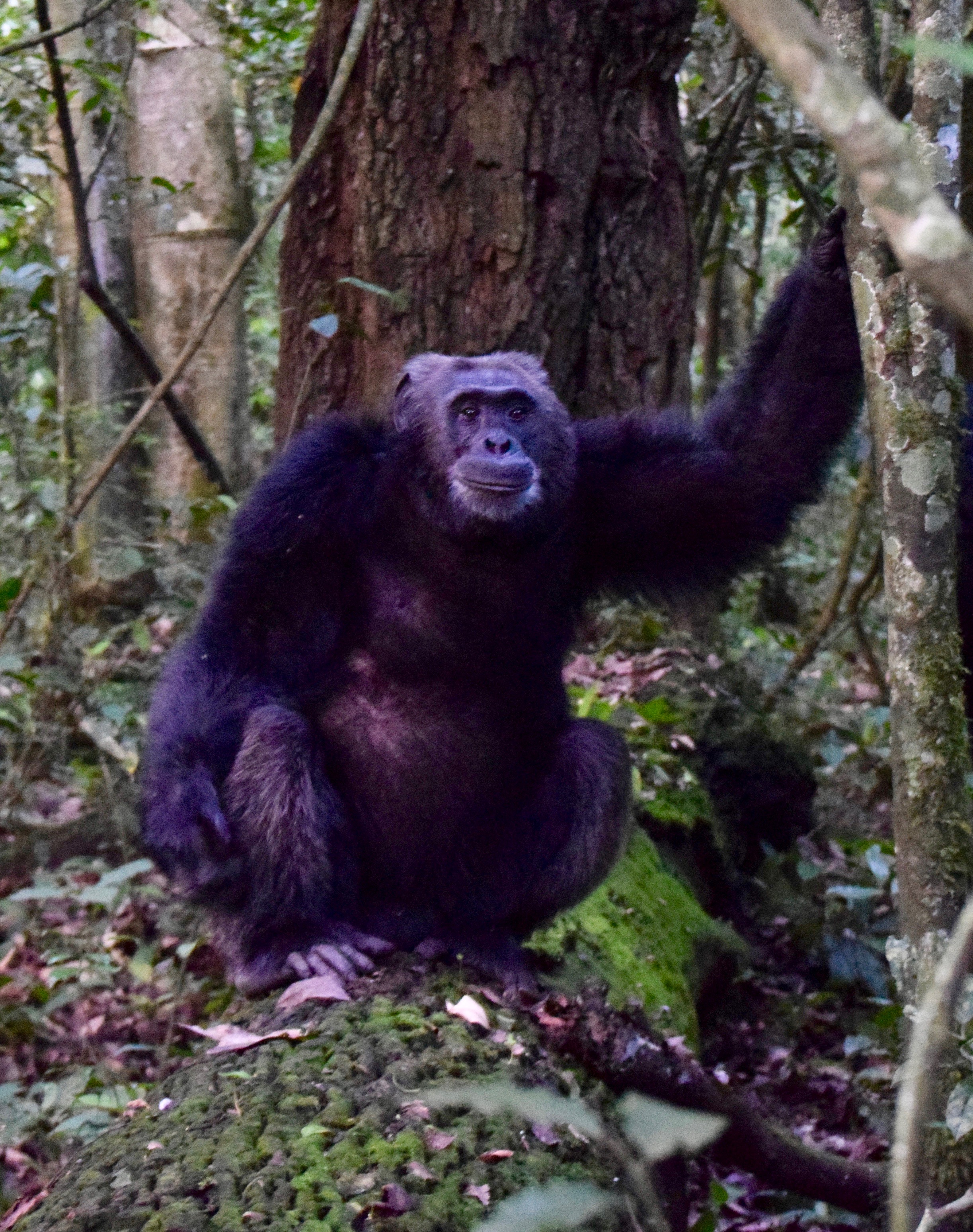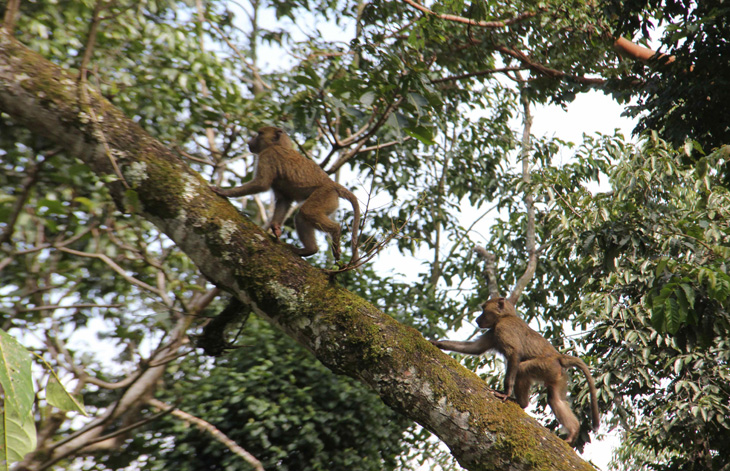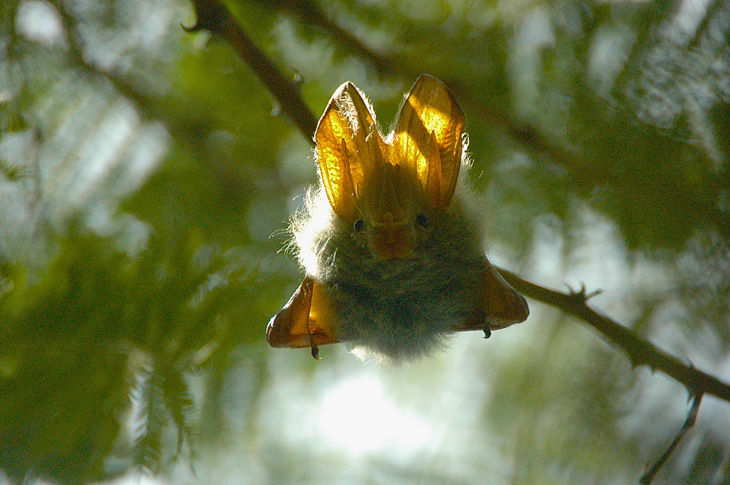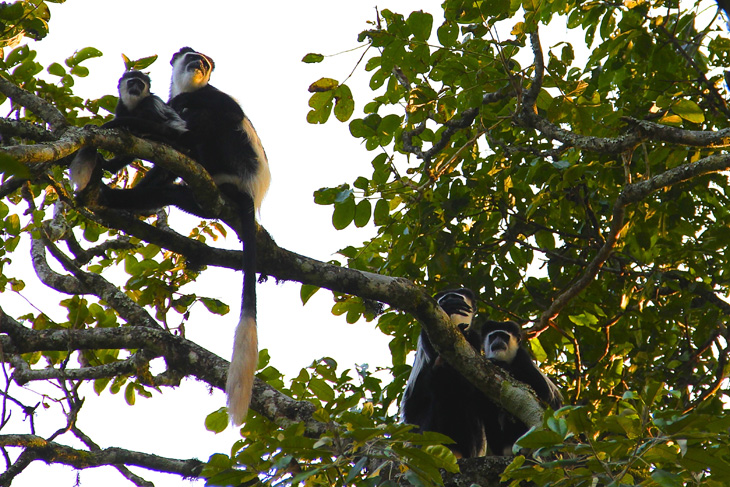Although not even in the top 20 African countries by size, Uganda has the continent’s 8th largest population and the world’s 5th fastest population growth rate, 3.4%. It is no surprise, then, that Ugandans are in desperate need of land, putting constant pressure on the country’s rich natural resources. National Parks like Kibale protect against deforestation and wildlife poaching, but the needs of the local people are ever-present concerns. NNF’s programs empower people to live in greater harmony with nature.
Kibale National Park boasts the highest density of primates in Africa, including over 1,400 Eastern Chimpanzees.
Kibale is also home to the last viable population of the Ugandan red colobus. One of nature’s true gems, Kibale deserves its national park status and protection for these three species alone, but the forest’s value runs much deeper:
Other primates include the black-and-white colobus, l’hoest monkey, red-tailed monkey, blue monkey, grey-cheeked mangabey, olive baboon, vervet, potto and two species of bush babies.
Besides primates, at least 70 mammal species are present in the park. An estimated 500 elephants, along with buffalo, golden cats, five species of antelope, three species of wild hogs and myriad other creatures can be found here.
With 250 butterfly species, 70 reptiles & amphibians and a conservative estimate of 375 species of birds, every inch of this forest teems with life.
Within its 300 square miles lies the last remaining significant tract of pre-montane forest on the African continent, where 351 tree species can be found, yet remarkably 23% of this park, famed for its forests, is open savanna where even lions and other plains animals can be found. Two sister parks to the West, Semliki-Tooro Reserve & Semuliki National Park, and one to the East, the Katonga Reserve, complete the Kibale Conservation Area.
Kibale is quite literally a modern-day Garden of Eden. But, as the legend goes, sometimes trouble befalls humans in Eden.
Two major tribes, the Batooro and Bakiga, inhabit the area around the park. They use the park for food, fuel, medicine and other resources. In the last century, the population around the park has increased sevenfold. It was only in 1993 that Kibale became a national park, and while drawing lines on a map can change the law of the land, the needs and generational traditions of a people and their culture do not change overnight.
Living below the poverty line, more than 95% of the local population relies on wood as their sole source of energy. Duikers, guineafowl and hogs are hunted illegally in the park, with chimps and other wildlife frequently caught in snares by mistake.
It is the mission of the New Nature Foundation to reconcile the needs of the people with the protection of the forest. Through leadership, mentoring, education and empowerment, we are re-writing the story of community conservation.
Together, YOU, our team and the people of Uganda can make sure this paradise is never lost.






